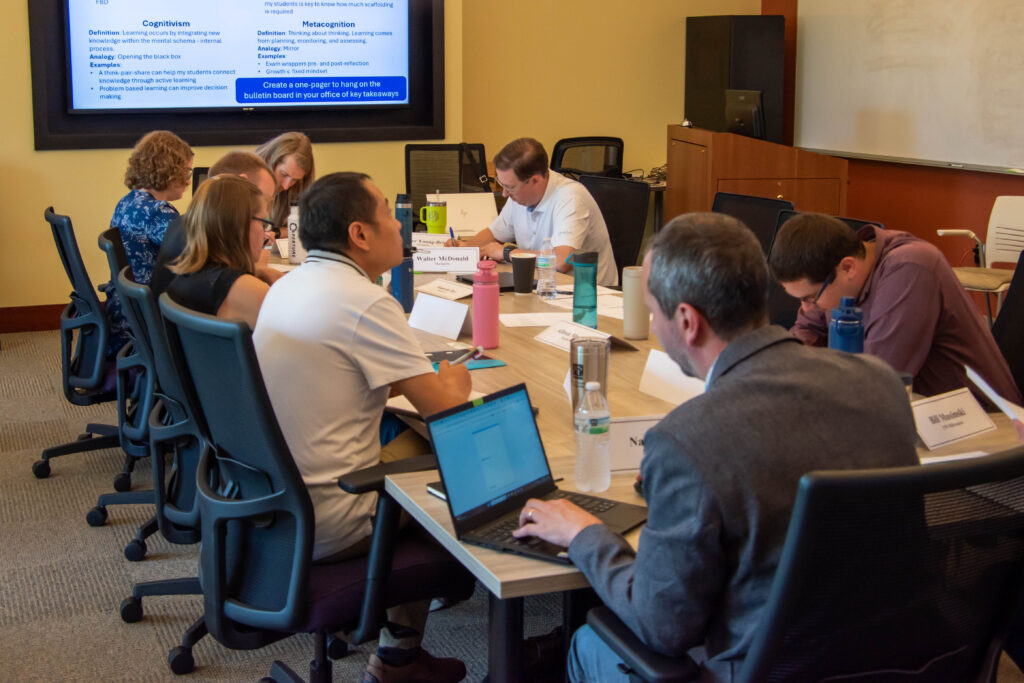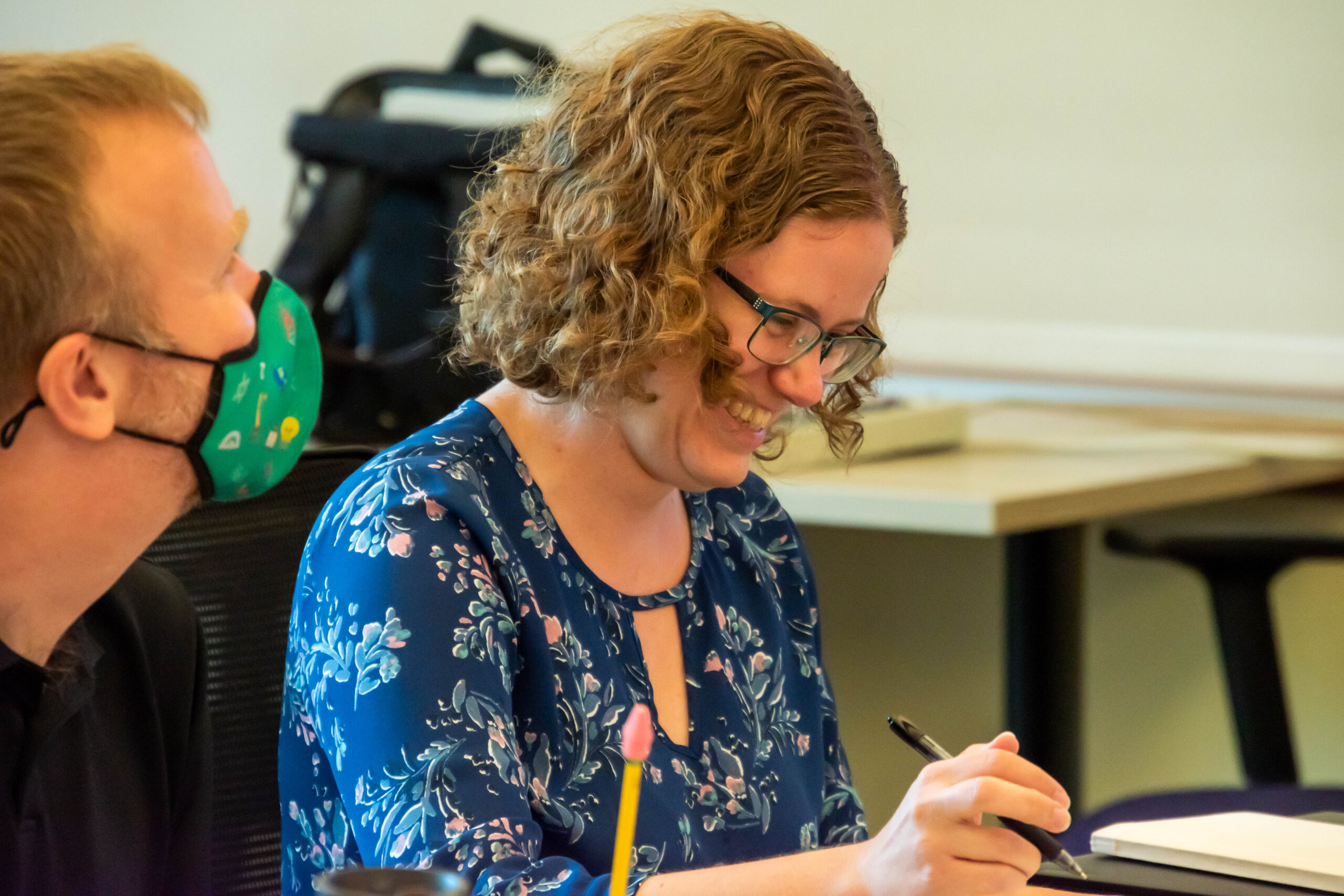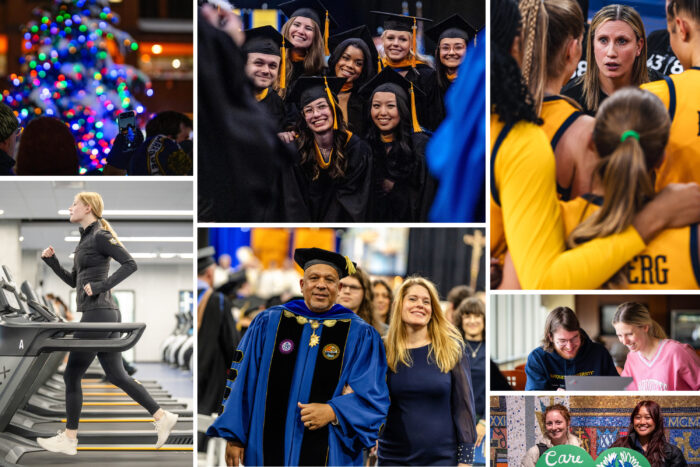In many disciplines, becoming a professor often requires a doctoral degree, which comes with years of intense research and gaining expertise in a specific area. The process includes extensive specialized instruction, years working on a dissertation and rigorous peer review, all preparing a Ph.D. candidate for a lifetime of conducting impactful research.
However, that years-long gantlet usually does not involve any formal education in how to effectively teach.
“Many people come into academic roles minimally prepared to teach; in many instances, if you have a Ph.D., you’re cleared to teach without having to learn anything about the science of learning,” says Dr. Amber Young-Brice, assistant professor and associate dean of academic affairs in the College of Nursing.
This led to Young-Brice’s research interest in pedagogy and, recently, to her forming a community of practice for engineering professors. An interdisciplinary team, including Dr. Somesh Roy, associate professor of mechanical engineering; Dr. Allison Murray, assistant professor of mechanical engineering; and Dr. Lisa Chase, assistant director of engineering education programs, facilitates this six-week course.
Funded by a grant from the National Science Foundation, the project brings instructors from around the greater Milwaukee area together to talk about different student learning styles and their implications for best teaching practices. The project also has an online component where participants self-pace through the same programming topics asynchronously with peers from across the country. All participants complete activities designed by Young-Brice and her team to give them opportunities to reflect on their instructional methods.
“At the end of the day, we all care about education, and we’re all learning from each other to be the best teachers we can be for our students.”
Dr. Wujie Zhang, a professor at Milwaukee School of Engineering.
But what does a professional development course for engineering professors have to do with nursing? The link is stronger than it seems.
“We’re using some nursing theory to underpin what we’re doing, including caring science, which started as something developed within the realm of nursing practice,” Young-Brice says. “We’re taking the human-first lens we use in our profession and applying it to learning.”
Such human-centric approaches to teaching might seem common sense, but they often call for a reevaluation of the way college classes have been taught for decades. Dr. Margaret McNamara, assistant professor of civil, construction and environmental engineering, learned how to lecture from the front of the classroom as a new teacher.
“That’s how I was taught to do it, but the literature on how active learning techniques improve outcomes has made me question if lectures are always the best way,” McNamara says.
During the COVID-19 pandemic, McNamara experimented with a “flipped classroom,” which involves recording lectures for students to watch at home, then assigning in-class problem sets or projects that would typically be homework; this way, students have easier access to the professor. McNamara was pleased to find that after an initial bout of awkwardness, the class embraced the new model because it better served their needs.
“They wound up appreciating the new format and learning really well from it,” McNamara says. “A lot of people are nervous about what the student evaluations are going to look like after trying something new and having it not work, but it ended up being really great.”

Young-Brice and her team have taught more than two dozen engineering professors representing five different higher education institutions over the course of two years through the in-person community of practice. While the faculty in the class learned new techniques for their classes, the researchers got something of their own: data about learners’ attitudes toward their course, which will tell them if their training was effective.
While measuring student success is beyond the scope of Young-Brice’s study, she hopes her work will lead to better learning outcomes. The idea is that if faculty are better informed about the literature on how to teach most effectively, they’ll be able to translate that knowledge into more innovative classes. It’s a philosophy reflected in Young-Brice’s research and stems from her role supporting faculty and staff development within nursing and beyond through engagement with the Center for Teaching and Learning.
There’s plenty of evidence to suggest these efforts are paying dividends.
“We had a faculty member in our first cohort who was new to teaching; they had never had a full courseload before,” Young-Brice says. “That faculty member ended up winning a teaching award this year, and she told me she used a lot of what we learned last summer.”
“At the end of the day, we all care about education, and we’re all learning from each other to be the best teachers we can be for our students,” says Dr. Wujie Zhang, a professor at Milwaukee School of Engineering.
This sentiment is ultimately why Young-Brice believes a nursing professor has an important role to play in engineering education. Everyone in the room, no matter their discipline, institution or level of experience, was united in the desire to improve the classroom experience. Combining a nursing instructor’s person-centered teaching with an engineering professors’ subject matter expertise created results that neither party could have achieved alone.
“I feel like I learned a lot of strategies to reach more of my students where they’re at,” McNamara says.



